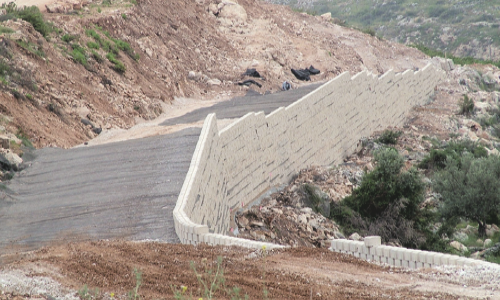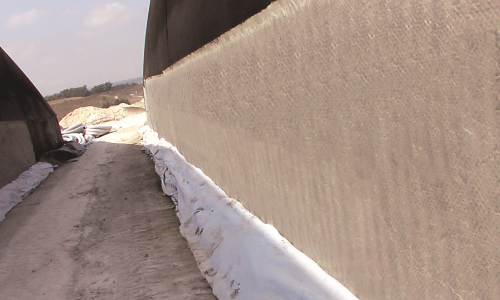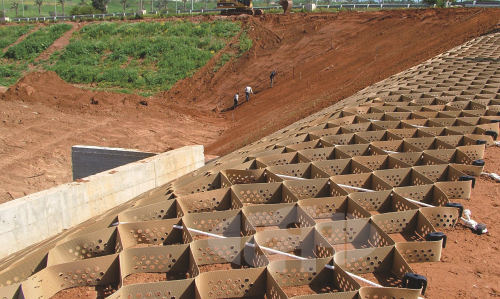Mechanical Structures and Engineering Techniques
We provide a variety of structural engineering services for industrial, commercial and institutional owners
Know our construction engineering services
The benefits of applying effective construction engineering solutions to a project are many:
Reduced construction cost
Improved quality and safety
Reduced construction risk

Civil Engineering
Reinforce the strength and reliability of your building products with our testing and certification programmes.

Geotechnical
Reinforce the strength and reliability of your building products with our testing and certification programmes.

Structural Engineering
Reinforce the strength and reliability of your building products with our testing and certification programmes.

Civil Engineering
Reinforce the strength and reliability of your building products with our testing and certification programmes.

Geotechnical
Reinforce the strength and reliability of your building products with our testing and certification programmes.

Structural Engineering
Reinforce the strength and reliability of your building products with our testing and certification programmes.
 Geosynthetics have been successfully used to fulfill a number of functions that contribute significantly to the good performance of roadways. They include the functions of separation, filtration, reinforcement, stiffening, drainage, barrier, and protection. One or more of these multiple functions have been used in at least six important roadway applications. The applications include the migration of reflective cracking in asphalt overlays, separation, stabilization of road bases, stabilization of road soft subgrades, and lateral drainage. This paper illustrates the mechanisms as well as key advances in each one of these multiple applications.
Geosynthetics have been successfully used to fulfill a number of functions that contribute significantly to the good performance of roadways. They include the functions of separation, filtration, reinforcement, stiffening, drainage, barrier, and protection. One or more of these multiple functions have been used in at least six important roadway applications. The applications include the migration of reflective cracking in asphalt overlays, separation, stabilization of road bases, stabilization of road soft subgrades, and lateral drainage. This paper illustrates the mechanisms as well as key advances in each one of these multiple applications. An array of geosynthetics such as biaxial geogrids, non-woven geotextiles and woven geotextiles are extensively used in the railway tracks primarily for separation, filtration and reinforcement purposes. The geosynthetics are particularly used at locations of high embankments underlain by soft clays and loose sands. Ground improvement using geosynthetics in the project primarily included geogrid-reinforced piled embankments with individual pile caps, geogrids at bridge approach transitions, geogrids for ground treatment beneath culverts, geogrids for culverts supported by stone columns, woven geotextiles for cement column works, non-woven geotextiles for excavation works, non-woven geotextiles at the top of the railway subgrade layer, non-woven geotextiles for temporary retaining walls and nonwoven geotextiles for slope protection works.
An array of geosynthetics such as biaxial geogrids, non-woven geotextiles and woven geotextiles are extensively used in the railway tracks primarily for separation, filtration and reinforcement purposes. The geosynthetics are particularly used at locations of high embankments underlain by soft clays and loose sands. Ground improvement using geosynthetics in the project primarily included geogrid-reinforced piled embankments with individual pile caps, geogrids at bridge approach transitions, geogrids for ground treatment beneath culverts, geogrids for culverts supported by stone columns, woven geotextiles for cement column works, non-woven geotextiles for excavation works, non-woven geotextiles at the top of the railway subgrade layer, non-woven geotextiles for temporary retaining walls and nonwoven geotextiles for slope protection works. The economics associated with a particular highway alignment or with the development of a parcel of land may be determined by the ability to create sufficient flat, or level, land to satisfy space, safety, or access requirements. Retaining walls are a common structural feature located adjacent to highways and building sites in many areas of the country. Retaining walls are popular because their vertical or near vertical faces increase the width of the relatively flat areas which are preferred for both highways and building sites. These areas must be excavated out of the existing terrain often requiring significant grade changes at the edges of the excavation. Though there are many types of retaining walls, geosynthetic reinforced (MSE) soil walls provide vertical grade changes at significantly less cost than conventional retaining walls.
The economics associated with a particular highway alignment or with the development of a parcel of land may be determined by the ability to create sufficient flat, or level, land to satisfy space, safety, or access requirements. Retaining walls are a common structural feature located adjacent to highways and building sites in many areas of the country. Retaining walls are popular because their vertical or near vertical faces increase the width of the relatively flat areas which are preferred for both highways and building sites. These areas must be excavated out of the existing terrain often requiring significant grade changes at the edges of the excavation. Though there are many types of retaining walls, geosynthetic reinforced (MSE) soil walls provide vertical grade changes at significantly less cost than conventional retaining walls. Geosynthetic barriers have been used as alternative solutions to mitigate deterioration processes in existing dams, to prevent the onset of seepage-induced degradation in new dams, and as the main hydraulic barrier in cases where low-hydraulic conductivity soils are not readily available. Geomembranes have been often placed on the upstream face of the dam, minimizing water infiltration and subsequent degradation of the dam materials. However, geomembranes have also been used in place of, or in addition to, clayey soil used as an impervious barrier in the core of a dam. The geomembrane is generally associated with other geosynthetics performing various functions, thereby forming a geosynthetic barrier.
Geosynthetic barriers have been used as alternative solutions to mitigate deterioration processes in existing dams, to prevent the onset of seepage-induced degradation in new dams, and as the main hydraulic barrier in cases where low-hydraulic conductivity soils are not readily available. Geomembranes have been often placed on the upstream face of the dam, minimizing water infiltration and subsequent degradation of the dam materials. However, geomembranes have also been used in place of, or in addition to, clayey soil used as an impervious barrier in the core of a dam. The geomembrane is generally associated with other geosynthetics performing various functions, thereby forming a geosynthetic barrier. The use of geosynthetics has progressed significantly over the past five decades. In the late 1990s, they were incorporated into standards and legislation requirements for use in critical applications, such as groundwater protection and landfills. Their use as filters, stabilization and reinforcement materials was defined in transportation applications in the 1990s as well. More recently, geosynthetics have been identified as one of the ‘durable, resilient, and sustainable materials’ which should be considered for developing and maintaining the waterways and harbours, reducing damage from storm events, and restoring the environment. The importance of cost-effective, environmentally friendly solutions is becoming a pressing requirement.
The use of geosynthetics has progressed significantly over the past five decades. In the late 1990s, they were incorporated into standards and legislation requirements for use in critical applications, such as groundwater protection and landfills. Their use as filters, stabilization and reinforcement materials was defined in transportation applications in the 1990s as well. More recently, geosynthetics have been identified as one of the ‘durable, resilient, and sustainable materials’ which should be considered for developing and maintaining the waterways and harbours, reducing damage from storm events, and restoring the environment. The importance of cost-effective, environmentally friendly solutions is becoming a pressing requirement. The use of geosynthetic erosion and sediment materials continues to expand at a rapid pace. From their early beginnings in the late 1950s, geosynthetic materials today are the backbone of the erosion and sediment control industry. Geosynthetic components are an integral part of erosion and sediment materials ranging from temporary products such as hydraulic mulch geofibers, plastic erosion control meshes and nettings, erosion control blankets and silt fences to high performance turf reinforcement mats, geocellular confinement systems, erosion control geotextiles and fabric formed revetments. The geosynthetic products are placed on or in the soil to improve slope stability of embankments, hillsides, and river and stream banks. Different geosynthetic materials are geo-textiles, geo-grids, geo-cells, geo-membranes and erosion control materials.
The use of geosynthetic erosion and sediment materials continues to expand at a rapid pace. From their early beginnings in the late 1950s, geosynthetic materials today are the backbone of the erosion and sediment control industry. Geosynthetic components are an integral part of erosion and sediment materials ranging from temporary products such as hydraulic mulch geofibers, plastic erosion control meshes and nettings, erosion control blankets and silt fences to high performance turf reinforcement mats, geocellular confinement systems, erosion control geotextiles and fabric formed revetments. The geosynthetic products are placed on or in the soil to improve slope stability of embankments, hillsides, and river and stream banks. Different geosynthetic materials are geo-textiles, geo-grids, geo-cells, geo-membranes and erosion control materials.Roads

- Geosynthetics have been successfully used to fulfill a number of functions that contribute significantly to the good performance of roadways.
- They include the functions of separation, filtration, reinforcement, stiffening, drainage, barrier, and protection. One or more of these multiple functions have been used in at least six important roadway applications. The applications include the migration of reflective cracking in asphalt overlays, separation, stabilization of road bases, stabilization of road soft subgrades, and lateral drainage.
- This paper illustrates the mechanisms as well as key advances in each one of these multiple applications
Railway Tracks

- An array of geosynthetics such as biaxial geogrids, non-woven geotextiles and woven geotextiles are extensively used in the railway tracks primarily for separation, filtration and reinforcement purposes.
- The geosynthetics are particularly used at locations of high embankments underlain by soft clays and loose sands.
- Ground improvement using geosynthetics in the project primarily included geogrid-reinforced piled embankments with individual pile caps, geogrids at bridge approach transitions, geogrids for ground treatment beneath culverts, geogrids for culverts supported by stone columns, woven geotextiles for cement column works, non-woven geotextiles for excavation works, non-woven geotextiles at the top of the railway subgrade layer, non-woven geotextiles for temporary retaining walls and nonwoven geotextiles for slope protection works.
Retaining Walls

- The economics associated with a particular highway alignment or with the development of a parcel of land may be determined by the ability to create sufficient flat, or level, land to satisfy space, safety, or access requirements. Retaining walls are a common structural feature located adjacent to highways and building sites in many areas of the country.
- Retaining walls are popular because their vertical or near vertical faces increase the width of the relatively flat areas which are preferred for both highways and building sites.
- These areas must be excavated out of the existing terrain often requiring significant grade changes at the edges of the excavation. Though there are many types of retaining walls, geosynthetic reinforced (MSE) soil walls provide vertical grade changes at significantly less cost than conventional retaining walls.
Reservoirs Dams

- Geosynthetic barriers have been used as alternative solutions to mitigate deterioration processes in existing dams, to prevent the onset of seepage-induced degradation in new dams, and as the main hydraulic barrier in cases where low-hydraulic conductivity soils are not readily available.
- Geomembranes have been often placed on the upstream face of the dam, minimizing water infiltration and subsequent degradation of the dam materials.
- However, geomembranes have also been used in place of, or in addition to, clayey soil used as an impervious barrier in the core of a dam. The geomembrane is generally associated with other geosynthetics performing various functions, thereby forming a geosynthetic barrier.
Drainage Systems

- The use of geosynthetics has progressed significantly over the past five decades.
- In the late 1990s, they were incorporated into standards and legislation requirements for use in critical applications, such as groundwater protection and landfills.
- Their use as filters, stabilization and reinforcement materials was defined in transportation applications in the 1990s as well. More recently, geosynthetics have been identified as one of the ‘durable, resilient, and sustainable materials’ which should be considered for developing and maintaining the waterways and harbours, reducing damage from storm events, and restoring the environment. The importance of cost-effective, environmentally friendly solutions is becoming a pressing requirement.
Erosion control

- The use of geosynthetic erosion and sediment materials continues to expand at a rapid pace. From their early beginnings in the late 1950s, geosynthetic materials today are the backbone of the erosion and sediment control industry.
- Geosynthetic components are an integral part of erosion and sediment materials ranging from temporary products such as hydraulic mulch geofibers, plastic erosion control meshes and nettings, erosion control blankets and silt fences to high performance turf reinforcement mats, geocellular confinement systems, erosion control geotextiles and fabric formed revetments.
- The geosynthetic products are placed on or in the soil to improve slope stability of embankments, hillsides, and river and stream banks. Different geosynthetic materials are geo-textiles, geo-grids, geo-cells, geo-membranes and erosion control materials.

